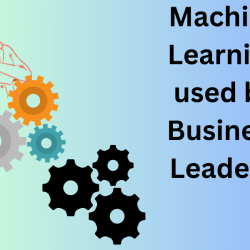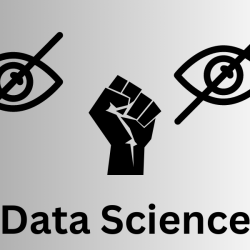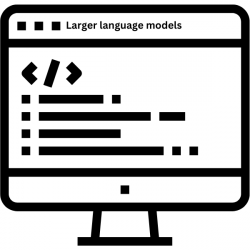A Brief Guide to Data Cleansing


A Brief Guide to Data Cleansing
What is Data Cleansing?
Data cleansing (also known as data scrubbing or data cleaning) is an important and necessary process in order to ensure accurate analysis and reporting on business data. It involves transforming raw data into clean, formatted data that is ready for use. By ensuring that the quality of your data is maintained, you can be assured that inaccurate values, duplicates, and outliers are removed for better decision making.
So, what exactly is data cleansing? Data cleansing is a process of inspecting, identifying and correcting incorrect values in a dataset to improve its overall quality. It involves various standardization techniques like replacing missing values with estimates, updating outdated information with current ones, filtering invalid entries, or removing duplicates. This process can be automated or manual depending on the amount of dataset available and the variety of formats to represent it (eg: tables, spreadsheets).
The goal of data cleansing is to ensure that all datasets are consistent and accurate which results in improved data quality. Without proper cleansing, any analysis conducted with the affected dataset will be inaccurate or incomplete due to errors in the collected source material. With fewer errors in the dataset you can have more trust in the results you generate from it.
Data cleansing allows organizations to get more out of their databases by helping them gain insights quickly and reliably. It eliminates barriers like incorrect values or out of date information which can interfere with decision making processes making it easier for businesses to make informed decisions based on accurate data. Investment Banking Program
Identifying Poor Quality Data
Data cleansing is an important part of any data analysis process. Poor quality data can lead to inaccurate interpretations and misleading insights. Being able to spot and identify poor data quality is the first step towards achieving accurate results. Here is a brief guide to help you identify poor quality data:
- Data Sources: One indicator that your data may be of poor quality is if it comes from multiple sources. Data should ideally come from one source so as to avoid discrepancies in its accuracy and formatting.
- Formatting Inconsistencies: Unreliable formatting can also be an indicator for poor quality data. If values are not entered in a consistent format, or the size of a field does not match its contents, it can lead to inaccurate readings down the line. Checking for consistency in your text, numeric, and date fields will help provide accurate analysis later on.
- Duplicate Entries: Duplicate records can skew the overall findings of an analysis by forcing the system to process redundant information over again. Slight differences in spelling or casing between multiple records (e.g., “Paul” and “PAUL”) can cause what otherwise appears to be duplicate entries; double checking each record helps eliminate this issue before further analysis begins.
- Outdated Records: If records are outdated based on changes to business regulations or customer preferences, they won’t accurately represent current conditions – so it’s important to make sure that all dates used in analyses are current before proceeding further with your work.
Strategies for Cleaning Data
The first step in effective data cleansing is identifying the potential quality issues within your dataset. Data quality issues can take a variety of forms, from contamination with incorrect or inconsistent values to formatting issues and typos. It’s important to identify these issues early on so that they don’t introduce bias into your analysis later.
Once you’ve identified the potential data quality issues, validate known data formats to ensure accuracy and consistency. This includes checking fields such as dates, numbers, names, and addresses against applicable standards defined by national and international organizations such as ISO or ANSI. Additionally, audit unexpected or inconsistent values in fields populated with open responses like comments or surveys; this will allow you to determine whether those responses are valid or if further clarification is required. Investment Banking Certification
Once you’ve isolated the values within your dataset that require further investigation, establish cleansing rules which will help standardize formatting and consistency across all fields within your dataset. This could involve creating new attributes/fields as needed; renaming existing attributes/fields; splitting (or combining) values into multiple fields; and formatting values (e.g., using regular expressions). These rules should also consider any business specific requirements that must be met before finalizing the cleaned version of the dataset.
Benefits of Cleaning Your Data
Eliminate Errors: When you clean your data, you can more easily detect errors in your datasets that could be preventing you from achieving accurate results. This process is especially important if manual processes are involved as human mistakes are all too common when dealing with large amounts of data. With careful scrutiny of your datasets during the cleansing process, you can find and fix errors before they become problems.
Increase Accuracy: As mentioned above, accurately scrubbing your datasets can lead to improved accuracy. But there are other ways as well that cleaning can ensure more reliable results. For example, by removing incomplete or duplicate records from your datasets, or by standardizing values into uniform formats (e.g., dates spelled out rather than using numerical representations), higher levels of precision can be achieved from even more complex analyses such as machine learning (ML) tasks. Investment Banking Course
Improve Analysis: Quality input equals quality output this is especially true when it comes to analyzing large amounts of data. Removing unnecessary columns or fields from datasets dropped in by users for analysis gives users better control over their queries and overall performance. By employing various transformation algorithms during data cleaning processes as well enables users to quickly prepare their data for subsequent analysis without needing to spend extra time on each dataset manually scrubbing it first themselves.
Common Practices & Tools Used for Cleaning Data
Data Wrangling: Data wrangling is the process of restructuring data into a more useful format. This involves changing formats such as CSV, JSON, or XML to make it easier to analyze. This also involves reorganizing column titles, deleting unnecessary columns, merging multiple datasets together, etc.
Data Enrichment: Data enrichment is the process of supplementing supplemental information into datasets. This can include topics like demographic information such as gender or age group or geographical information such as state or country. It also includes adding value based information like sentiment score or customer loyalty index scores to existing customer data sets.
Data Transformation: Data transformation is the process of taking raw data and converting it into another form so it’s easier to work with and analyze. This includes tasks like combining multiple datasets together by applying formulas across rows or columns in order to generate new metrics from existing datasets like customer lifetime values for each customer segment.
Exploratory Data Analysis: Exploratory data analysis (EDA) involves exploring a dataset in order to understand its properties and variables better, including visualizing relationships between variables as well as discovering patterns within them. EDA often uses statistical techniques such as correlation tests in order to determine which factors are significant when predicting outcomes or answering questions about a dataset.
How to Prepare a Database for Cleansing
To start the process of data cleaning, you’ll first need to identify the different data types in the database. This will allow you to evaluate the existing database and analyze any data sources needed for the process. Once identified, you should test for accuracy and define standards and formats so that any errors can be flagged quickly.
Once you’ve established the necessary parameters, it’s time to assign priorities to tasks so resources can be allocated accordingly as well as generate scripts for transformation. This will help streamline the transition process when dealing with large amounts of data. To ensure each step is complete correctly, develop plans for quality assurance by tracking progress along the way and verifying completed tasks against standards set during the initial preparations.
Data cleansing may seem daunting at first but following these steps can help make sure your databases are well prepared for any necessary processes that need to happen moving forward. By preparing your database before starting a cleaning process, you can easily work towards ensuring high quality results and maintain accurate records going forward.
Best Practices After Cleansing Your Data
First, it’s important to subset the data to ensure that you are only dealing with the relevant fields for analysis. Having only the necessary information speeds up your analysis and makes it easier to detect any issues.
After that, you should investigate the data types of each field so that they can be used accurately in any calculations or visualizations. This is especially important when dealing with dates and numbers.
It is then important to identify any missing values in order to determine how they should be handled or if they need to be imputed. Any anonymization of sensitive data should also take place at this stage.
Another key step is to remove any duplicate records from your dataset, as this can cause misleading results in your analysis if not handled correctly. Additionally, you should format columns/rows as necessary and sort or combine different datasets based on their relevance in your analysis.
Finally, documenting the cleaning process is essential for traceability and reproducibility purposes! Doing so allows future researchers to understand how the data was preprocessed before being analyzed and helps them build upon existing work done by others on the same dataset. Corporate Investment Banking
The Importance of Regularly Maintaining Good Quality Datasets
Technology has made data maintenance a much easier process than it used to be. Automated tools, such as those offered by leading data cleansing software providers, can automate the process of locating outdated or incorrect records in your database, helping you keep track of changes over time and ensuring that your data remains current. These tools also allow you to edit records quickly whenever necessary—and even delete records that are no longer useful—so that your database always accurately reflects what’s actually going on.
Data cleansing is the process of editing or removing inaccuracies from raw data in order to make it more consistent and useful. It involves checking records for typos, incorrect entries, missing information, etc., then correcting these errors manually or using automated methods. This careful approach ensures that any decisions based on this data will be valid and reliable; it also means your company is less likely to suffer from financial losses due to inaccurate analysis or faulty predictions. Investment Banking
In conclusion, regular maintenance of good quality datasets is absolutely essential for any organization looking to get the most out of their data. Automation tools can help organizations rapidly locate errors or inconsistencies within their dataset while allowing them to make edits quickly and easily—saving both time and money in the long run. And with careful use of data cleansing techniques, businesses can rest assured that their decisions






Ingen kommentarer endnu